As much as I love film, I’ve always had a love / hate relationship with medium format. Spoiled by the speed of 35mm’s fast lenses and the liberal largesse of 4×5 and 5×7 large format negatives, medium format has always seemed to me to be a series of compromises: a negative that has some but not enough room for cropping; lenses that deliver rich details but are ultimately quite slow. Plus there’s the sheer bulk of medium format bodies. I’ve found only a few MF cameras that come close to matching the ergonomic comfort of the 35mm SLRs and rangefinders I’ve used over the years, which has often meant porting a tripod with me whenever I set out to use a medium format camera, a complication that rules out casual shots and makes street photography pretty much impossible.
Enter the medium format folder, a throwback to an age when medium format was the film format of the masses.
Most folders still sport slower lenses than their 35mm counterparts, and of course the issue of that “in between” negative size persists, but there are some folders out there that are even smaller than the average 35mm film body when folded, which is a huge plus when you’ve grown tired of carrying around a big camera bag packed with all of your expensive gear.
The Konica Pearl III is one such camera.
Manufactured in the late 1950s, the Konica Pearl III III is the second-to-last of Konica’s Pearl series, cameras which were quite popular until the surge in interest in the 35mm film format. Like its predecessors, the III shoots 6×4.5 sized images on 120 or 220 medium format film, but it has more features than the original Pearl and the “Baby” Pearl. These features include a coupled rangefinder, semi-automatic (auto stop) film advance, and flash synchronization.
(There are three variants of the Pearl III. The later two have a Seikosha shutter instead of the Konirapid that the model originally shipped with. I have the third variant, the IIIL, which comes with a Seikosha-MXL shutter.)
Features of the Konica Pearl III
In practice, using the Pearl III isn’t all that different than using any other folder. These are all-manual cameras without light meters or “self-cocking” shutters that are linked to a film advance knob or lever, and before you can even use this camera, you have to unfold it. So why would someone who is so picky about film formats want a Konica Pearl III?
Well, for one thing, the Pearl III literally fits in the palm of my hand when folded. Shooting with a camera that creates negatives larger than 35mm but is in fact more portable than my Leica M6 is a treat, as I can simply slip the Pearl III into my pocket or sling it from my wrist before I leave the house. For me, convenience and camera portability do matter, because I live in NYC and walk or take the train everywhere; it’s wonderful not to have to worry about carrying a bulky camera bag if I don’t want to.
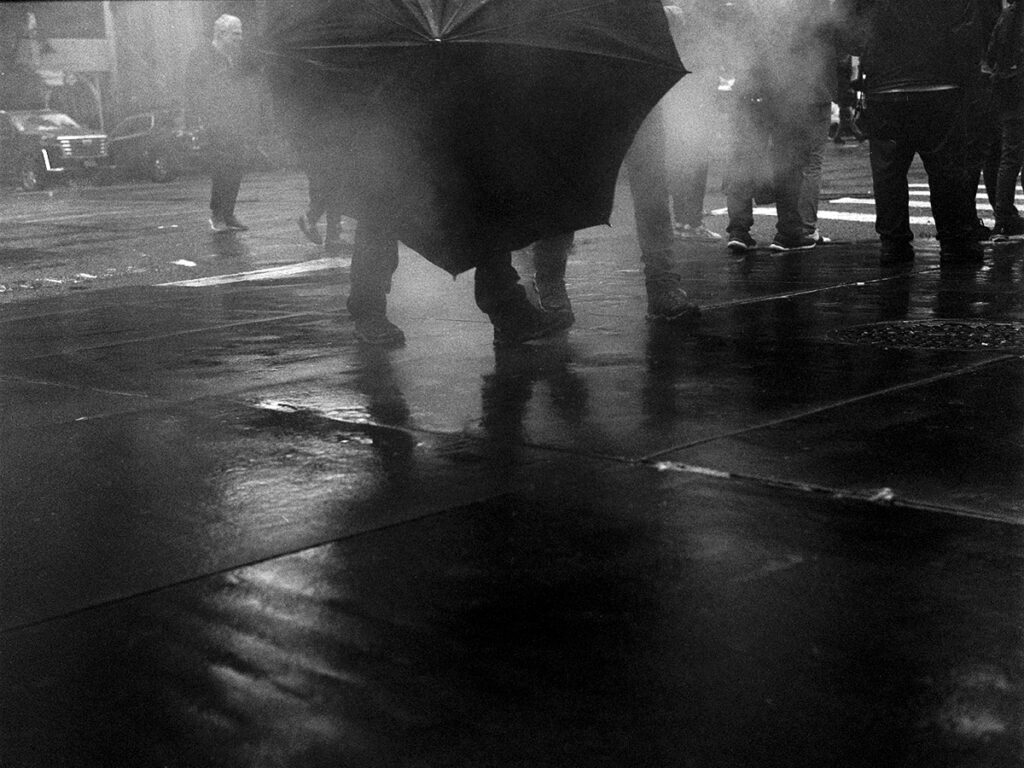
Loading film into the Konica Pearl III is actually easier than loading film into a Hasselblad or a Mamiya film back. And while you’re shooting, yes, you do have to wind a knob on the bottom of the camera to advance the film after each shot, but the Pearl III doesn’t have the obnoxious red window that so many folders employed. You trigger the shutter, you wind until the mechanism auto-stops, and you hand cock the shutter again.
When you’re ready to use the Pearl III, you simply press a button to unfold it. If the camera is in good working order, it will spring open and the 75mm f3.5 Hexar lens will snap into place. Like so many medium format cameras, the Pearl III’s shutter also couples aperture and shutter speeds to preserve EV values, which depending on your personal preferences, may be something that you like (I do) or that you find a bit annoying. For instance, if you’re shooting at 1/100th a second and f8 and decide you’d like to add some bokeh to your next frame, you simply dial the shutter up, which changes the aperture without modifying your EV.
The Pearl III’s coupled rangefinder is quite easy to use, and while the alignment spot or patch isn’t as bright or as large as the spot you’ll find in a more modern rangefinder, I’ve found that in most daylight conditions, it’s very reliable. (Not so much at dusk or at night, but this is true of a lot of RF cameras.) The notched focusing knob fits your forefinger or middle finger perfectly, and the range of focus is easy to manage since the knob only travels about a third of a revolution around the lens (from the nearest focal distance, at roughly three feet, to infinity). The one thing you do have to remember, however, is to rack the focus all the way in before you close the camera; if you fail to do so, you can damage the lens or the folding mechanism.
The viewfinder is smaller than what you’ll get with a more modern camera, but for a folder, it seems huge. Because of the 6×4.5 frame, the orientation is flipped, which means that to shoot in landscape (instead of portrait) mode, you turn the camera at a right angle.
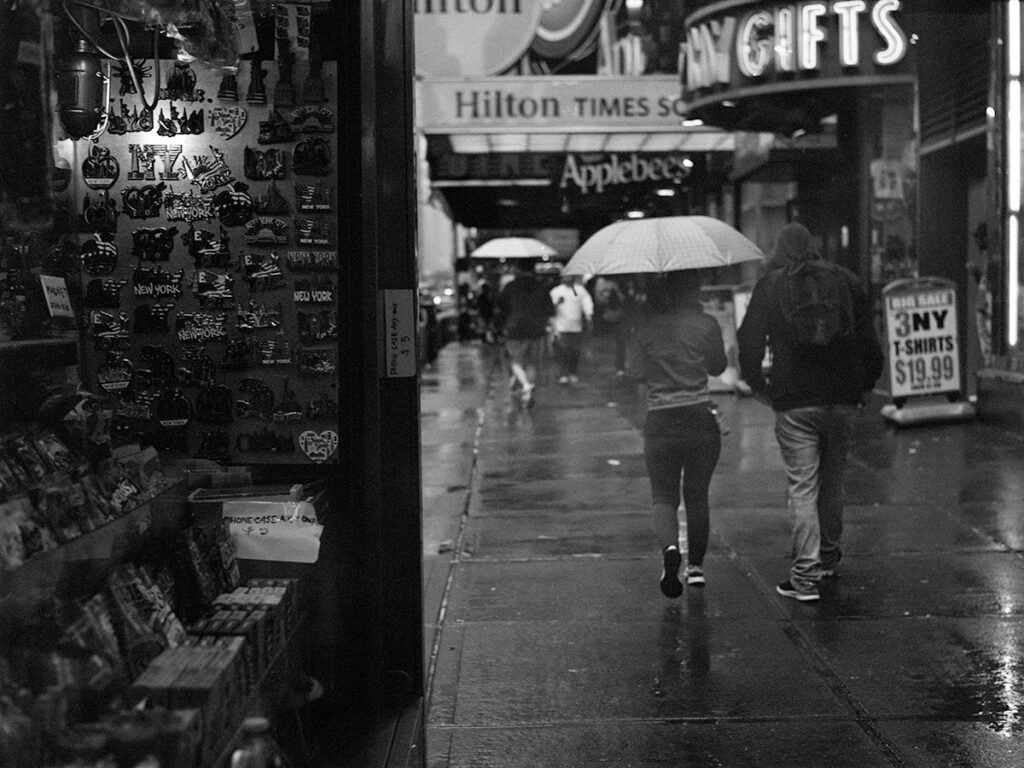
The later variants of the Pearl III come with an amber coated Hexar lens, a lens which is surprisingly sharp, given its age and design. You will get some flare in direct light if you’re not careful, in spite of the lens coating, and unfortunately there isn’t a go-to hood that you can snap on the front because of the lens’s odd filter size. But in most shooting situations, you’ll be pleased with the results you get considering how incredibly tiny the Hexar is.
This brings us to the shutter, the one down side of owning a Konica Pearl III.
“Sticky” Seikosha Shutters: Endemic to the Pearl III?
I love that the Seikosha MXL has a top speed of 1/500th of a second, which is pretty rare in a folder, and although I can’t imagine pairing this little camera with a flash, it’s nice to have that option. What I don’t love is how common it is for the Seikosha’s on this particular camera to develop a “sticky” shutter.
Because of the relative rarity of the Pearl cameras, they are almost impossible to find outside of Japan. This means that you’re not only buying a camera sight unseen but that you’re buying a camera that may be difficult or impossible to return if there are problems with it. In my case, I knew as soon as I received my Pearl III that the shutter had a stickiness issue—after release, it would sometimes hang, and I had to nudge the cocking lever to get it to close—but I’ve had this problem with old cameras before. Sometime just working the shutter enough would loosen it up, and then it would work fine; at other times, a simple cleaning or application of canned air would free the dust that had clogged it up, and all would be well. On my Pearl III, four of the sixteen frames on my test roll were affected by the sticky shutter issue, creating either blurred or overexposed photos, so I tried the usual de-dusting and spent some time working the shutter, just cocking it and firing it over and over again.
The stickiness seemed to go away, but my second, in earnest roll proved me wrong. The stickiness had actually gotten worse: over half of my sixteen frames on the second roll were flawed. Frustrated, I took the camera to Nippon Photo in Manhattan, where I’ve had repairs on vintage cameras done in the past. The estimate for repair came to over $350, but to Nippon’s credit, they did a complete CLA (adjusting the RF as well) for about $300.
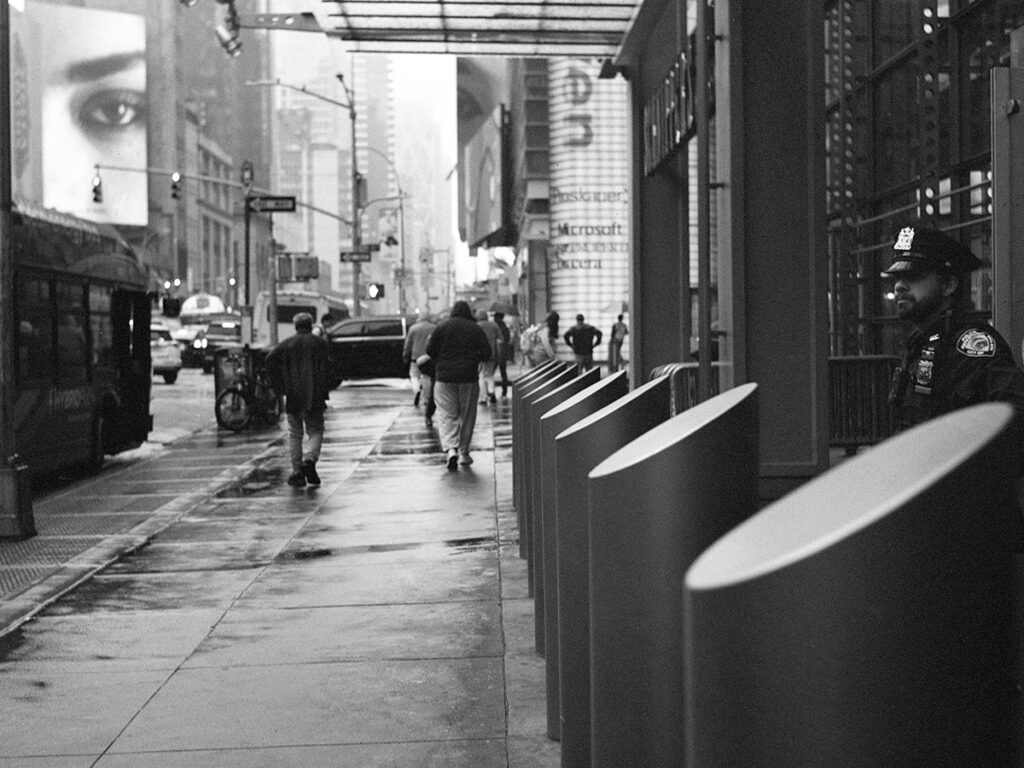
While the camera was in the shop, I did a little research and realized that I wasn’t the only one who’d had this problem. Apparently there is something about the lubricant that was used in the Pearl III that creates the stickiness that sometimes develops in the Seikosha shutters: I found three other Pearl III users who dealt with the same issue. What I don’t know is whether the original variant of the Pearl III, which came with a Konirapid shutter, has the same tendency to stick after disuse.
Was It Worth It?
Would the shutter issue have put me off buying a Konica Pearl III if I’d known about it ahead of time? I’m sure that it would’ve if I expected to pay $300 or $400 for one, but mine was considerably cheaper than that: with international shipping, it wasn’t quite $150. Given that the shutter I have now works perfectly and considering the usability, utility, and collectibility of the camera, I’m satisfied with the final result, but I may have felt differently if I’d had to ship the camera somewhere to have it repaired.
I should note that from what I could find out online, the sticky shutter is endemic just to the later Pearl III variants. I saw no such complaints from Pearl I, II, or IV owners.
So, to sum up, this is a great little camera with a bevy of features for a folder and has a delightful design, but be aware of the risk of the sticky shutter if you’re thinking about buying your very own Pearl III.
About the images in this post: Aside from the color photograph of the Konica Pearl III camera, the images in this post were shot on Holga 400 black and white medium format film that was pushed 1 stop during home development in Xtol. Images were scanned with an Epson v750 flatbed scanner and minimally processed in Photoshop.
About the author: Chad Gayle is a writer and former studio photographer. His commercial photography has appeared in the New York Times and The Huffington Post. Samples of his film photography of NYC are on view at chadgayle.photo, where you can also check out his medium format camera buyer’s guide, a five part series that covers MF SLRs, rangefinders, and folders. You can also find Chad on BlueSky.
Share this post:
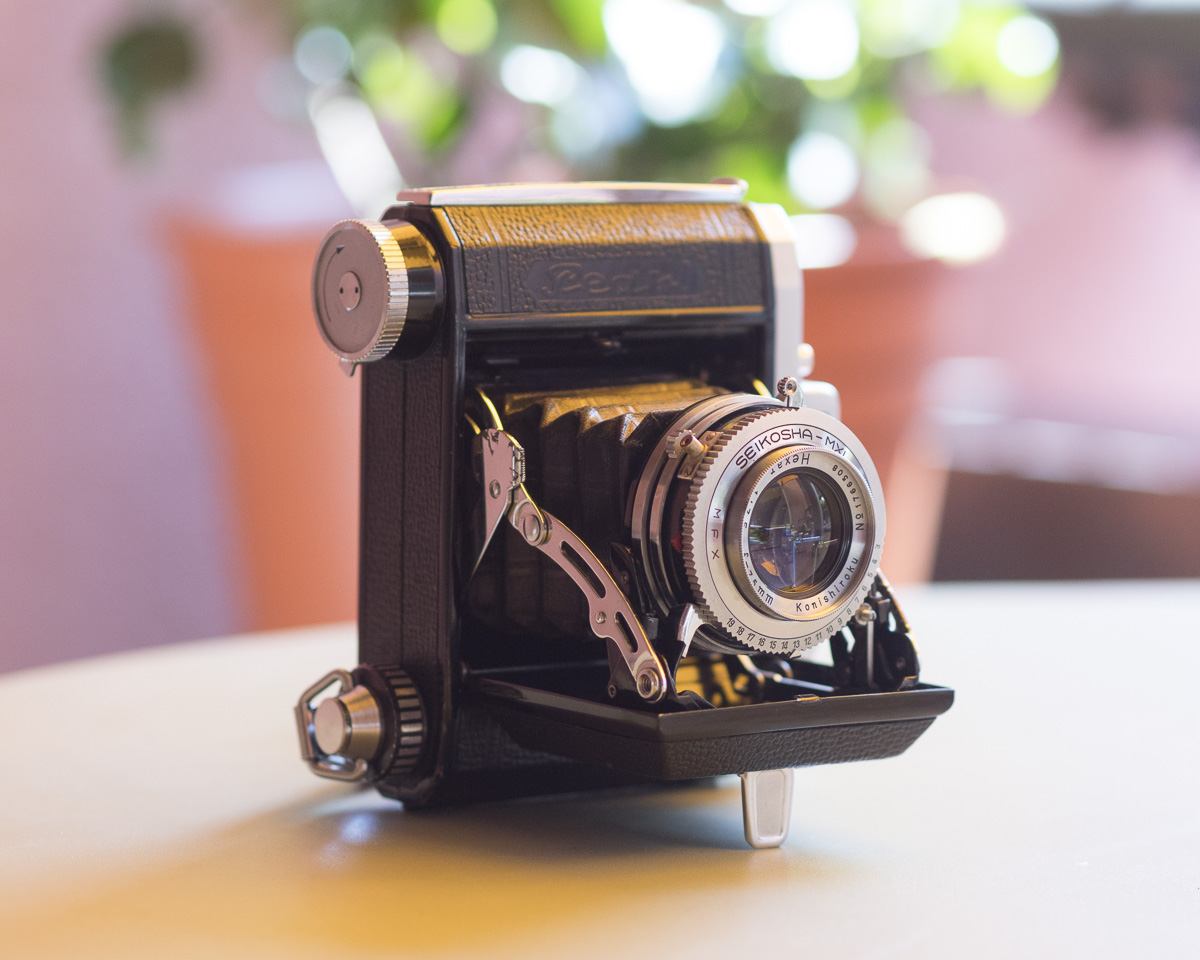
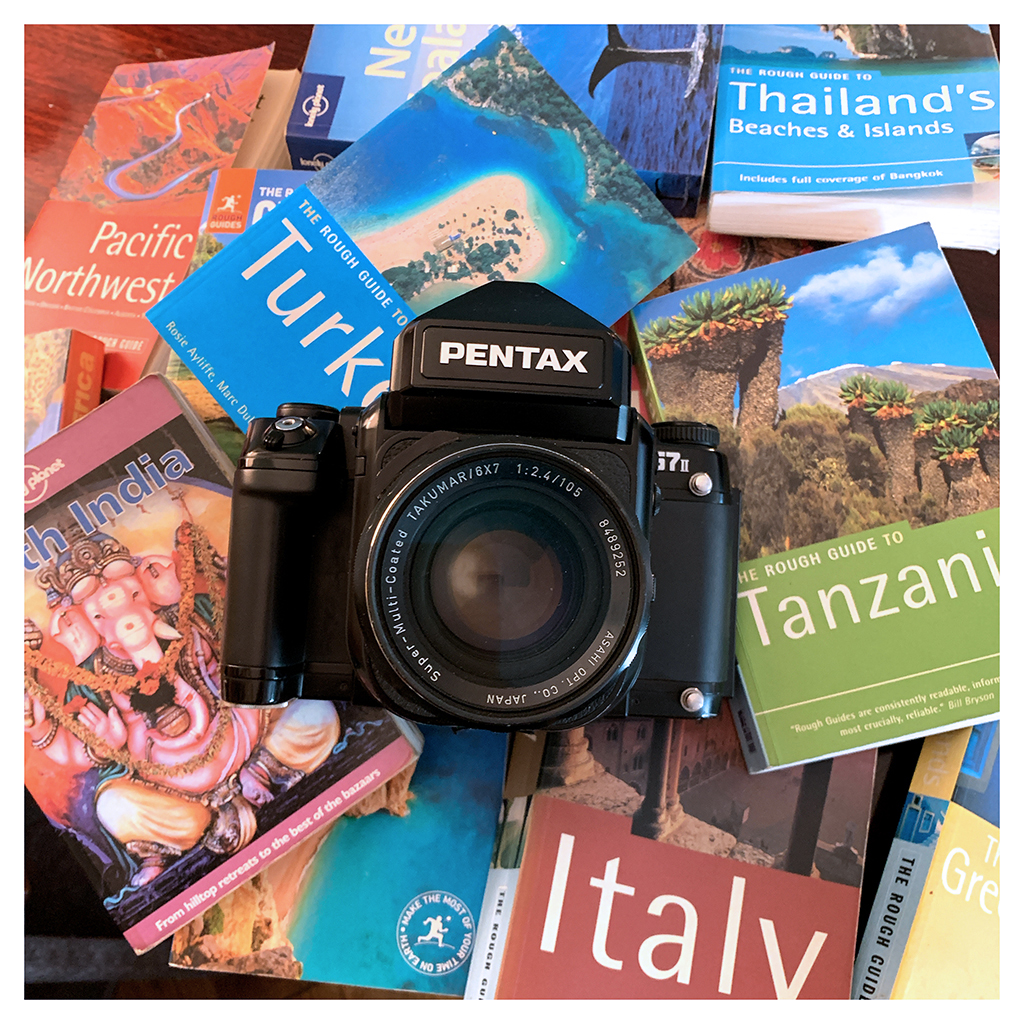
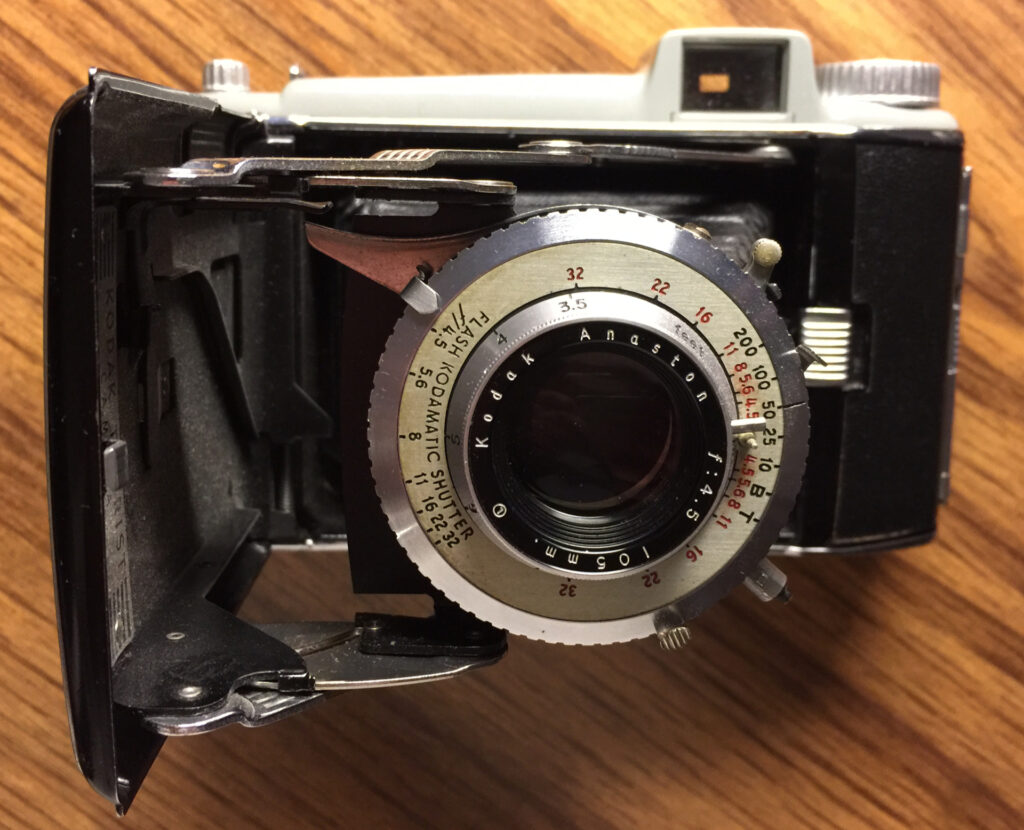
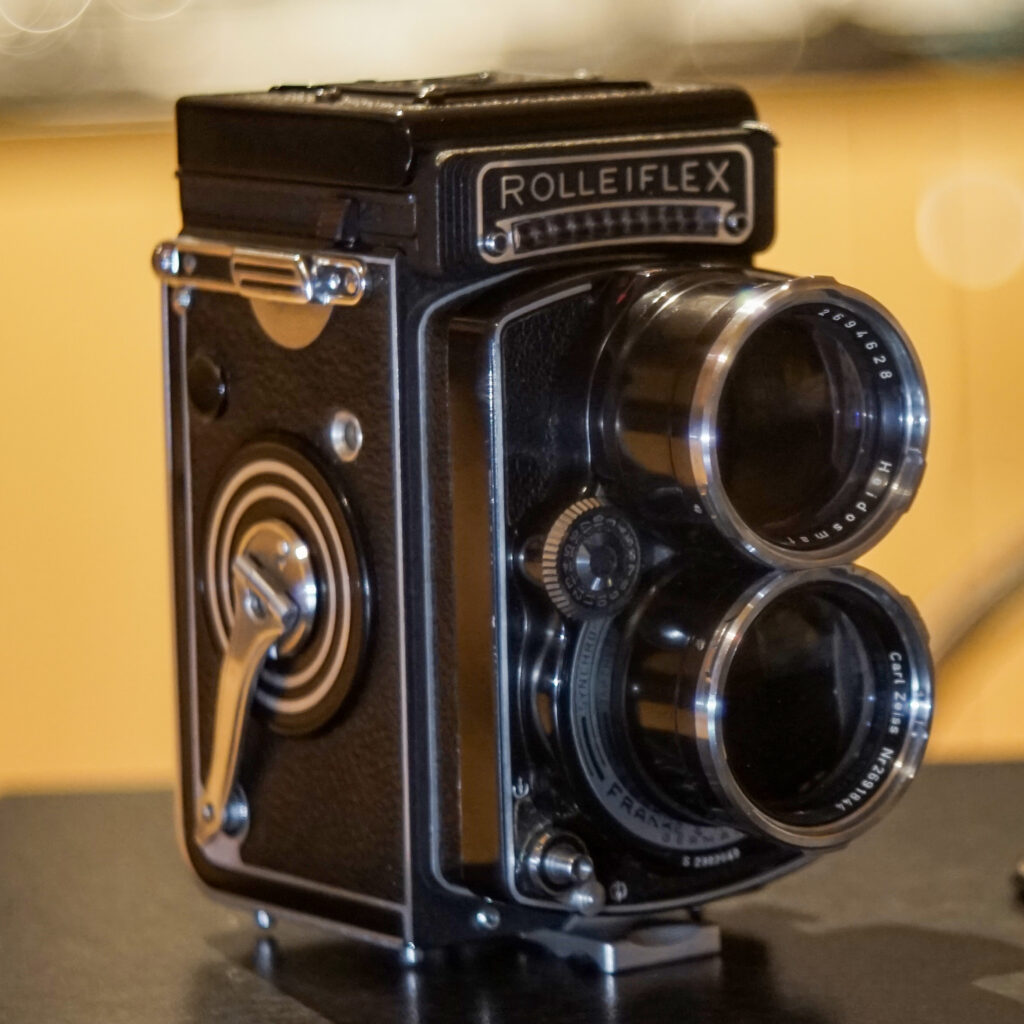
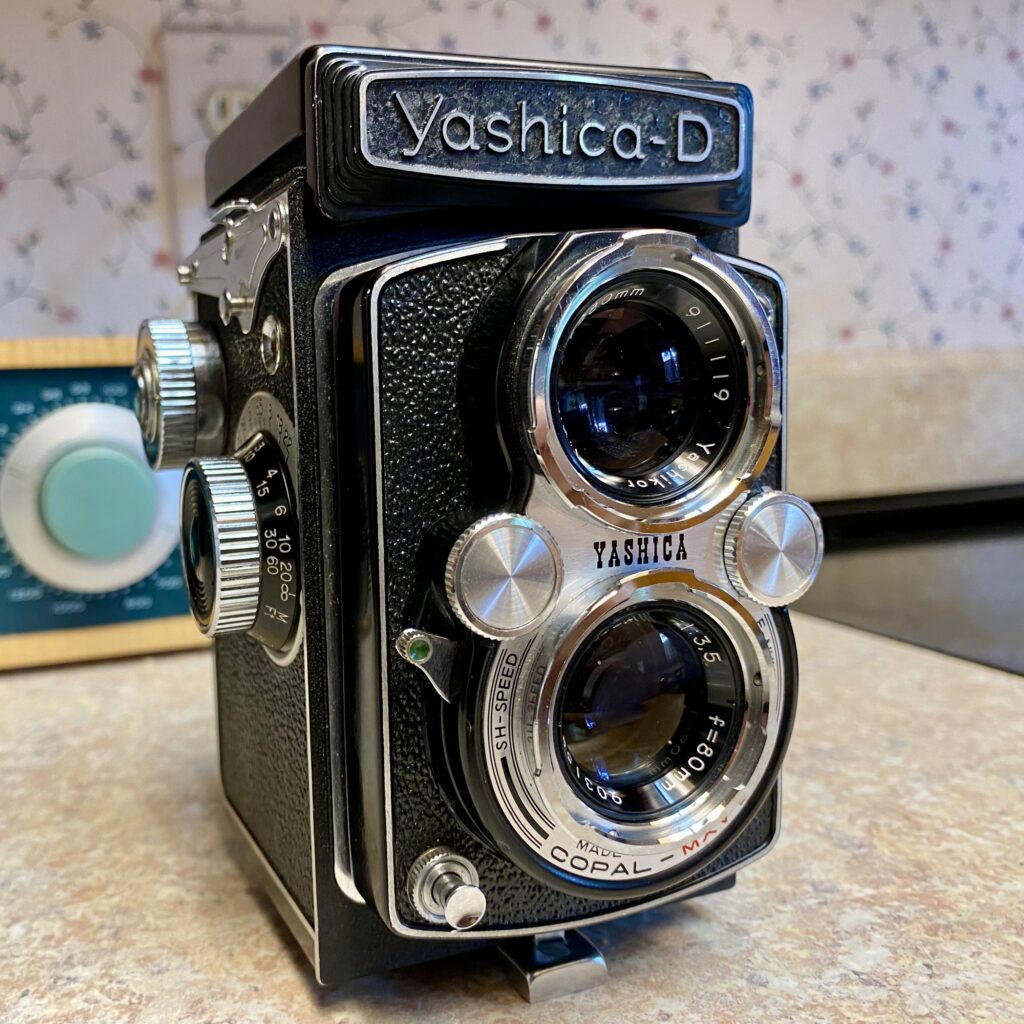




Comments
Jeffery Luhn on Konica Pearl III Medium Format Folder – Review and Street Shots from NYC
Comment posted: 25/11/2024
Nice shots!
I love folding cameras! They are the Goldilocks size between 35mm and 4x5. My brand of choice is Zeiss, but my Mamiya 6 is a good performer. The Zeiss Contessa 35 mm is a very small little brother that fits into a back pocket.
Your NYC pix remind me of many business trips to the Big Apple. Endless jazz clubs, museums, and crowded sidewalks. Where I live now in a tiny gold rush village in the California Sierras, we only have wooden sidewalks, if any sidewalks exist. You have more pedestrians in one shot than I'd encounter in a day! Thanks for sharing!